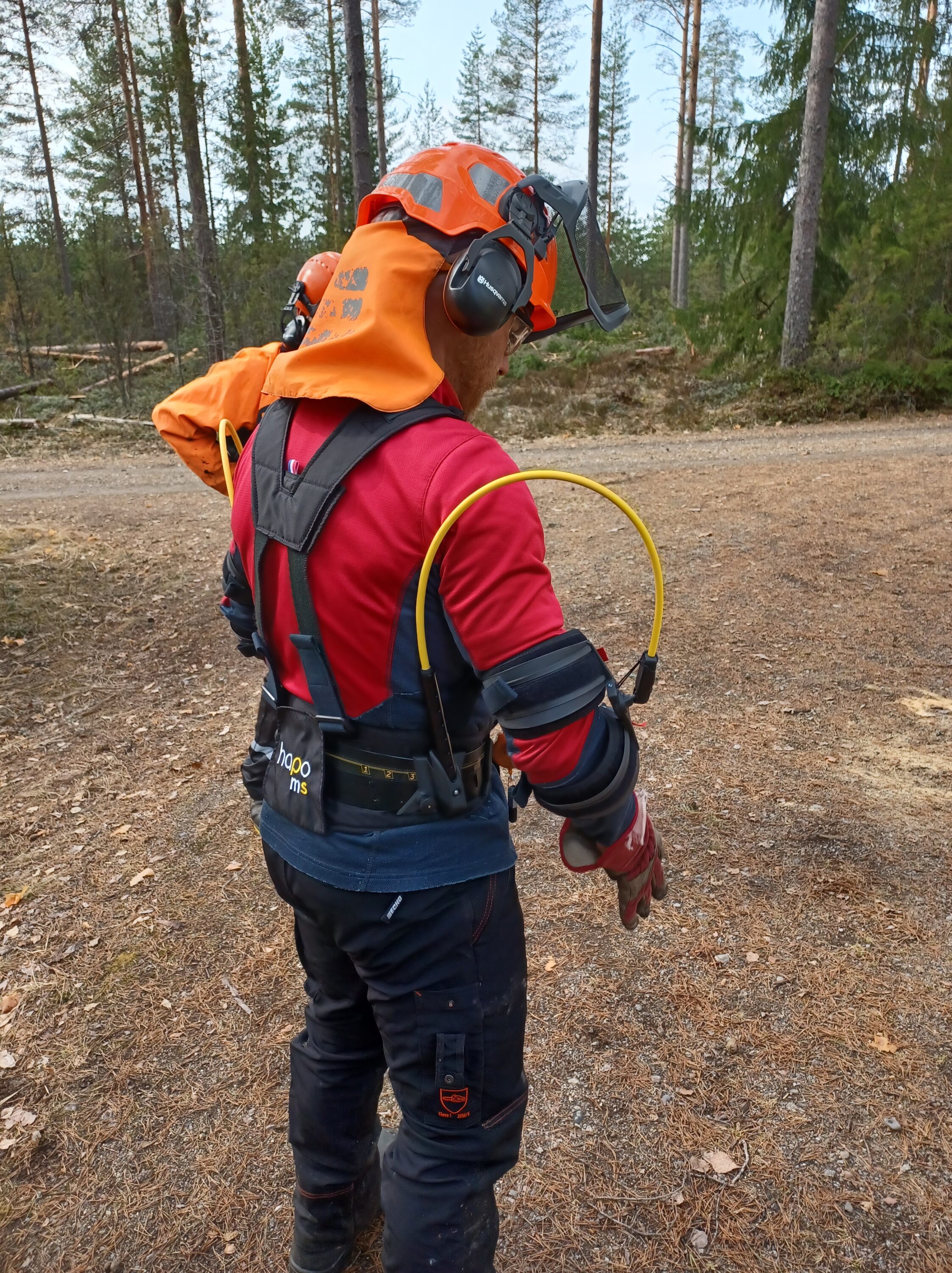
EXO AGRI
Wearable Technology in Supporting Sustainable Food System and Farming



Project information
| Project | Wearable Technology in Supporting Sustainable Food System and Farming |
| Duration | 19.2.2024-30.4.2026 |
| Partners | Häme University of Applied Sciences |
| Funders | European Regional Development Fund (ERDF) |
| Budget | 177 669 € |
Towards a Sustainable Food System: Exoskeletons for Lighter Work and Better Productivity in Agriculture and Horticulture.
Improving productivity is one of the most important issues in the national economy, which affects all sectors. A sustainable and efficient food system is also a national and an international challenge. With the support of industrial robotics and automation, capacity and machine productivity can be increased in the food industry. However, the most effective technology for improving the productivity of primary production in agriculture could be the exoskeletons that assist farmers.
There are some experiences of the benefits of exoskeletons from various fields, but experiences in the agricultural and horticultural sector are still limited. The aim of the project is to develop a sustainable food system by supporting farmers in the agricultural and horticultural sector with the help of wearable technology.
The main objective of the project is to enhance farmers’ new know-how to use exoskeletons for reducing workload and improving productivity. The other objectives are to develop new technology-assisted working methods, create a technology need assessment tool and to prepare training material for the utilization of exoskeletons. The aimed results of the project are new know-how and new processes to utilize exoskeletons in improving productivity, a prototype of the technology needs assessment tool, training materials on utilizing exoskeletons and improving productivity, and the new product and process innovations.
Target group
The primary target group consists of farmers, horticulturists, and green and greenhouse entrepreneurs in the regions of Kanta-Häme, Päijät-Häme, Kymenlaakso, and Varsinais-Suomi, whose work involves physically demanding tasks. The secondary target group includes small-scale primary product processors who could benefit from wearable technology in warehouse logistics and production.
Operating area
Kanta-Häme, Southwest Finland, Päijät-Häme, Kymenlaakso
Actions
The project consists of five work packages, which include the following actions:
- Mapping farmers’ work processes and tasks, introducing exoskeletons, measuring workload, and evaluating work productivity.
- Selecting exoskeletons and pilot testing them, measuring impact in real work environments, and assessing user experiences.
- Assessing entrepreneurs’ technological expertise, testing technological assessment tools, and developing new exoskeleton innovations.
- Identifying and creating the materials needed for exoskeleton orientation and implementation.
- Preparing a communication plan for the project, establishing a website, maintaining connections with entrepreneurs, participating in theme seminars, publishing articles, and compiling the final report.
Follow us on social media!
Check out HAMK’s social media channels focusing on research!
Contact information
Project Manager: Dr. Kimmo Vänni
